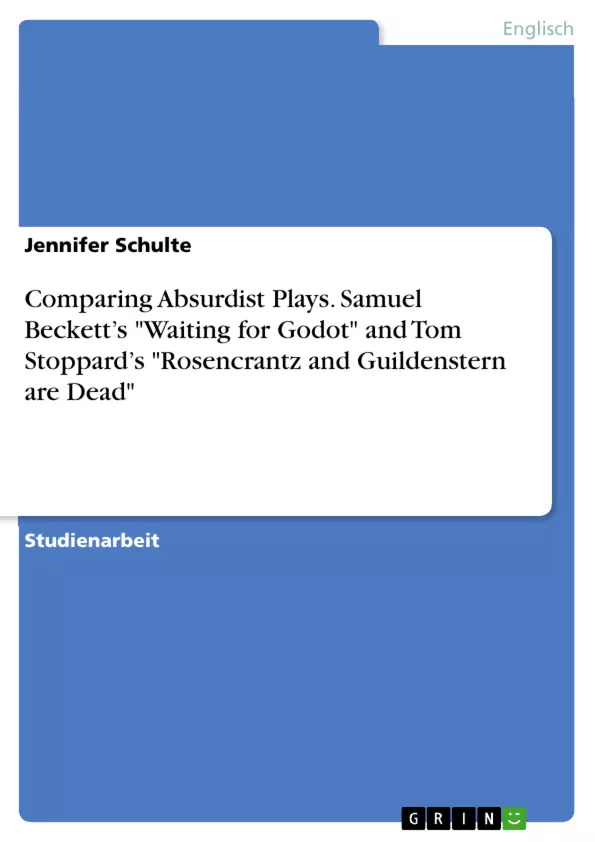This paper tries to compare two absurdist plays by examining characters, structure and communication within the plays.
Inhaltsverzeichnis
- I. Introduction
- II. Comparing Absurdist Plays: Samuel Beckett’s Waiting for Godot and Tom Stoppard’s Rosencrantz and Guildenstern are Dead
- 1. Characteristics of Absurd Theatre
- 2. Comparison of Waiting for Godot and Rosencrantz and Guildenstern are Dead
- 2.1. Characters
- 2.2. Communicational Devices
- 2.3. Absurd Elements
- 2.4. Structure
- 2.5. Ideas and Topics
- III. Stoppard’s Further Focus on Social Determinism
Zielsetzung und Themenschwerpunkte
Die vorliegende Arbeit setzt sich zum Ziel, die beiden absurden Dramen „Waiting for Godot“ von Samuel Beckett und „Rosencrantz and Guildenstern are Dead“ von Tom Stoppard zu vergleichen. Der Fokus liegt dabei auf der Darstellung der Figuren, den Kommunikationsmitteln, der Struktur, den absurden Elementen und den Ideen und Motiven in beiden Stücken. Dabei wird auch die Frage nach der sozialen Determination der Figuren, die durch äußere Kräfte und Strukturen beeinflusst werden, beleuchtet.
- Absurdität des menschlichen Daseins und die Suche nach Sinn
- Soziale Determination und die Abhängigkeit von äußeren Kräften
- Sprache und Kommunikation als unzuverlässige Mittel
- Zeit als sinnlose Dimension
- Zerfall der westlichen Kultur und Verlust von Identität
Zusammenfassung der Kapitel
Das erste Kapitel führt in das Theater des Absurden ein und definiert die wichtigsten Merkmale dieser Theaterform. Dabei werden die Werke von Samuel Beckett und Eugène Ionesco hervorgehoben. Das zweite Kapitel vergleicht die beiden Stücke „Waiting for Godot“ und „Rosencrantz and Guildenstern are Dead“ anhand der Figuren, der Sprache, der Struktur, der absurden Elemente und der Ideen und Motive. Das dritte Kapitel untersucht Stoppards Fokus auf die soziale Determination, die durch gesellschaftliche Strukturen und Normen entsteht.
Schlüsselwörter
Die wichtigsten Schlüsselwörter und Themen der Arbeit sind Absurdes Theater, Soziale Determination, Sprache, Zeit, Identität, westliche Kultur, „Waiting for Godot“, „Rosencrantz and Guildenstern are Dead“, Samuel Beckett, Tom Stoppard.
- Citation du texte
- B.A. Jennifer Schulte (Auteur), 2013, Comparing Absurdist Plays. Samuel Beckett’s "Waiting for Godot" and Tom Stoppard’s "Rosencrantz and Guildenstern are Dead", Munich, GRIN Verlag, https://www.grin.com/document/432941



